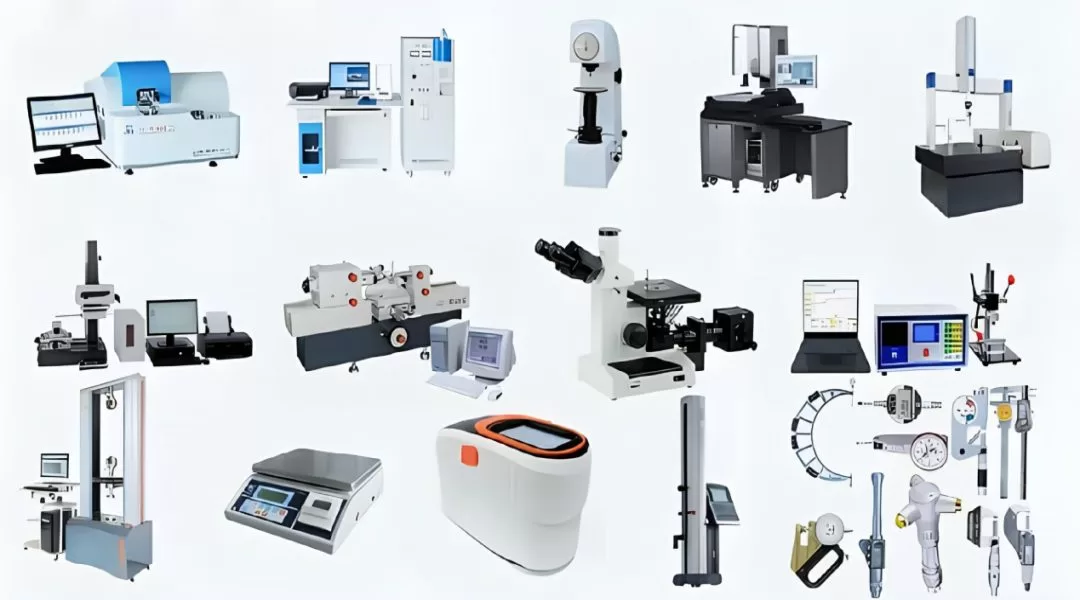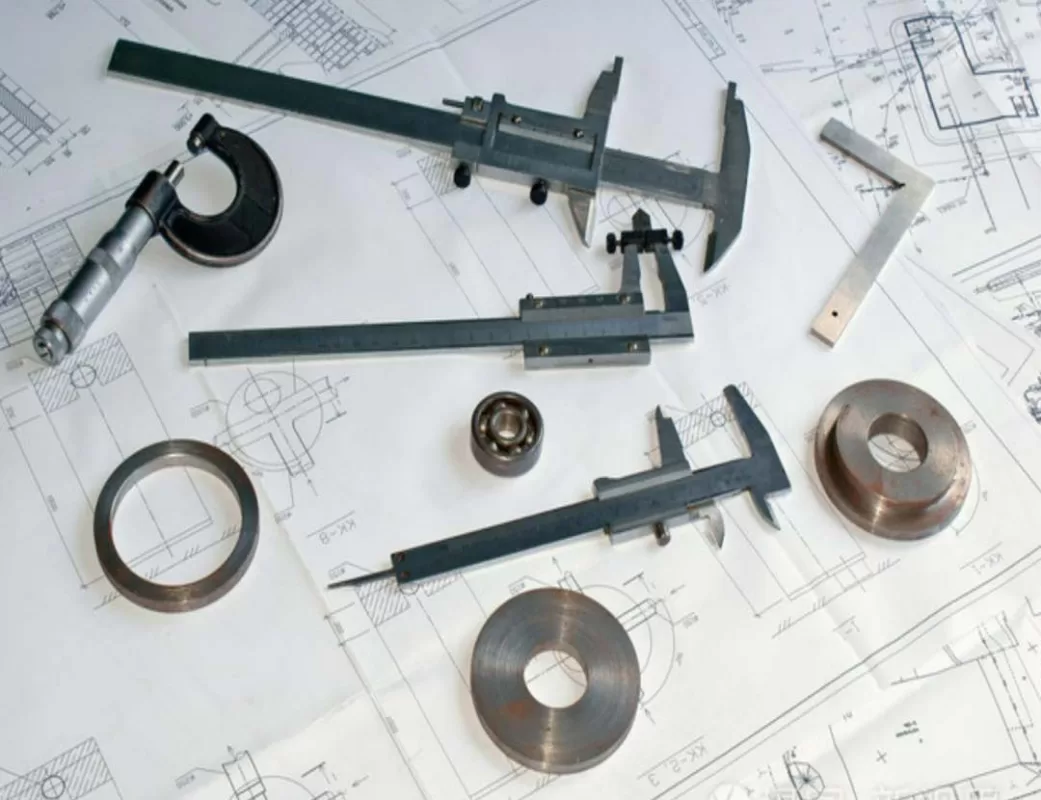
What Are The Common Measuring Tools Used In Machining?
- By:Metmac
- 2024-03-27
- 252
Table of Contents
Measurement technology is a technical guarantee for quality management, which is an indispensable work in science and technology, industrial and agricultural production, domestic and foreign trade, engineering projects and various fields of daily life. What are the commonly used measuring tools for machining? Measuring tools can be divided into four categories according to the measuring principle, structural characteristics and uses.

Commonly used measuring tools for machining
I. Standard measurement tools
A standard measuring tool is a measuring tool that reproduces the value of a quantity in a fixed form, also known as an unmeasured tool. Usually used to calibrate and adjust other measuring tools. For example, measuring blocks, line rulers, right angles and standard gauges.
II. Universal measuring tools
General-purpose measuring tools are more versatile, can measure any size (or other geometric quantities) within a certain range, and can obtain specific readings. According to the structural characteristics can be divided into the following types:
1. Fixed Scale Gauge: Fixed Scale Gauge refers to a certain scale mark, within a certain range can be directly read out the measured value of the gauge, such as tape measure, steel ruler, and so on.
2. Vernier gauge: refers to the direct movement of the probe to achieve the geometric measurement of the gauge, such as vernier calipers, vernier height calipers, vernier protractor and so on.
3. Micro-spiral vice-type gauge: refers to the spiral way to move the probe to achieve the geometric measurement of the gauge, such as inside micrometer, outside micrometer, depth micrometer, etc..
4. Mechanical gauge: refers to the mechanical method to achieve the measured transmission and amplification to achieve the geometric measurement of the gauge, generally have a mechanical micrometer mechanism. This instrument has a simple structure, stable performance, easy to use. Such as per cent, lever gear comparator, torsion spring comparator.
5. Optical gauge: refers to the use of optical principles to achieve the measured transformation and amplification, in order to achieve the geometric measurement of the gauge, generally with optical amplification micrometer mechanism. This kind of measuring instrument has high precision and stable performance. Such as optical comparator, tool microscope, interferometer.
6. Electric measuring instrument: refers to the measured through the sensor transformed into electricity, and then through the measurement of the amount of electricity to achieve the geometric measurement of the gauge, generally with amplification, filtering and other circuits. This instrument is highly accurate, measurement signal by the analogue / digital (A/D) conversion, easy to interface with the computer to achieve the measurement and data processing automation, such as: inductive measuring instrument, capacitive measuring instrument, electric contouring instrument and so on.
7. Pneumatic gauge: compressed air as a medium, through the pneumatic system flow or pressure changes to achieve geometric measurement of the gauge. This meter structure is simple, measurement accuracy and efficiency are high, easy to operate, but the value range is small, such as water column pneumatic measuring instrument, buoy pneumatic measuring instrument.
8. Photoelectric type gauge: the use of chemical methods of amplification or targeting, through the photoelectric element and then converted to the amount of electricity for detection, to achieve the geometric measurement of the gauge, such as: photoelectric microscope, fibre-optic sensors, laser interferometer and so on.
III. Special measuring tools
Refers to the measurement tools specially used to measure a particular parameter, such as roundness meter, involute checker, limit gauge, etc.. The term broadly encompasses a diverse array of measurement instruments, each meticulously designed for the specific purpose of assessing a particular parameter critical to the integrity and functionality of various components and systems. Among these specialized tools, one finds the roundness meter, an advanced device that quantifies the roundness, or the degree of deviation from a perfect circle, of an object. This is essential in industries where precision is paramount, as even minute deviations can significantly impact performance and longevity.
Another exemplary tool within this cadre is the involute checker. It serves a critical role in evaluating the intricate geometrical properties of gears, specifically the involute profile—a fundamental aspect that dictates the efficiency and noise level of gear operation. By precisely measuring the deviations from ideal geometrical configurations, the involute checker ensures that the gears meet stringent quality standards, thereby guaranteeing optimal performance in applications ranging from automotive transmissions to industrial machinery.
Furthermore, limit gauges represent a class of measurement tools designed to verify the dimensional tolerances of manufactured parts. These gauges are vital in quality control processes, offering a quick and efficient method for pass-fail assessments based on predefined dimensional standards. By facilitating the rapid inspection of component sizes, shapes, and allowable variations, limit gauges play a crucial role in maintaining the high quality and consistency of products, thereby enhancing reliability and customer satisfaction.
These instruments, among others, embody the essence of precision measurement in modern manufacturing and engineering. They are indispensable in achieving and maintaining the exacting standards required in today’s technologically advanced and highly competitive industrial environment. By enabling precise measurement and inspection of various parameters, these tools contribute significantly to the optimization of product design, the enhancement of manufacturing processes, and the assurance of final product quality, thereby underscoring their pivotal role in the continuous improvement and innovation within industries.

IV. The inspection fixture
Refers to the combination of gauges, measuring instruments and positioning elements such as a special inspection tool, when combined with a variety of comparators, can be used to test more, more complex parameters.
Summary
In summary, these gauges are effective in ensuring machining accuracy and quality, and are easy to use. If you want to know more about how to use these gauges, we recommend that you refer to the relevant books and information.
-
Iron Sheet Laser Cutting Machine: Unmatched Precision for Demanding Fabrication with METMAC
2026/01/06 -
Precision Metal Cutting Machine: The Engine of Modern Manufacturing, Powered by METMAC
2026/01/06 -
Sheet Metal CNC Laser Cutting Machine: Precision Redefined with METMAC Technology
2026/01/06 -
Sheet Metal Press Brake for Sale: Find Your Precision Bending Solution with METMAC
2026/01/06
-
Advanced Sheet Metal Rolling, Laser Cutting, and Folding Machines for Precision Fabrication
2025/10/31 -
High-Performance Sheet Metal Bending and Cutting Machines for Modern Fabrication
2025/10/31 -
High-Quality Sheet Metal Equipment for Sale: Efficient Solutions for Modern Manufacturing
2025/10/31 -
High-Performance Sheet Metal Equipment for Sale: Forming and Shearing Solutions for Modern Fabrication
2025/10/22
-
A Guide to the Latest Innovations in Sheet Metal Folding Machines
2024/11/29 -
Key Features to Consider When Investing in a Sheet Metal Folding Machine
2024/11/28 -
Enhancing Precision with Advanced Sheet Metal Folding Machines
2024/11/27 -
How to Choose the Right Sheet Metal Folding Machine for Your Workshop
2024/11/26







